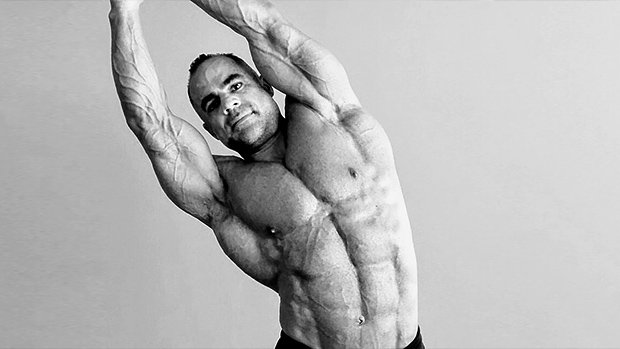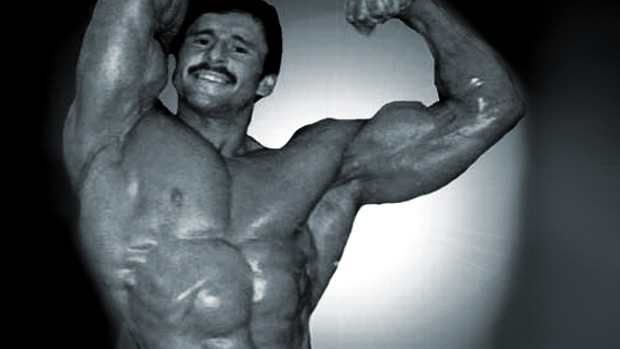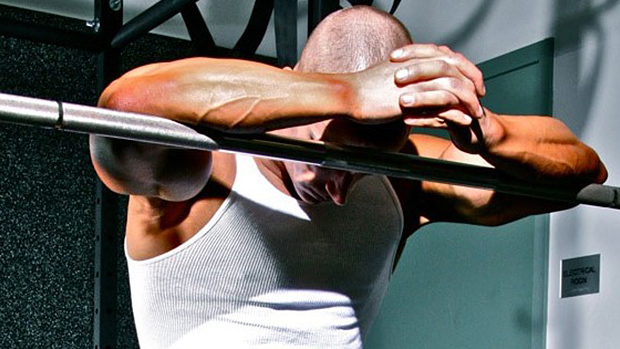We Don't All Respond the Same Way to Training
According to science, we don't all respond equally to exercise stimulus. At one end of the (drug-free) spectrum are the infuriatingly gifted. Even after their beginner phase, all they need to do to keep their muscles growing is to just look at a weight.
At the opposite end is the long-suffering hardgainer. In spite of doing everything right, results come very slowly or not at all. Most of us fall somewhere in the middle.
The Heritage Family Study focused primarily on cardiovascular adaptations such as VO2max (maximal oxygen uptake during aerobic exercise), but the conclusions apply to the lifting game as well. Part of the study involved over 600 test subjects undergoing baseline fitness testing prior to a 20-week stationary cycling program. The results of the post-program fitness testing form a normally distributed, quite lovely bell curve.

- Clustered in the middle, close to 70% of test subjects, experienced VO2max improvements between 8 and 24%. These were the normal-responders.
- About 16% were low-responders, with improvements between 0 and 8%.
- Another 13% or so were high-responders, with 24-42% improvement.
- A mere 1% scored a greater than 42% improvement. These were the super-responders.
- And then there was the remaining 2%, the poor negative-responders and non-responders who actually experienced either a fitness decrement or no improvement at all from the 20-week program.
The poorest of the negative-responders saw a 5% decrease in VO2max after all that exercise. The best had a 56% improvement. The average response was a pretty impressive 17%.
Researchers compared response rates within families. The data suggest a strong genetic component. How you respond to training has much more to do with your choice of parents than it does with your initial fitness levels, gender, age, or race.
The Heritage Study and others have found similar results for many other health and fitness parameters. Again, this distribution of exercise response is related to cardiovascular adaptations, but what about muscular strength and hypertrophy?
Nearly 600 subjects underwent baseline testing for maximum voluntary contraction (MVC), one rep max (1RM), and muscle size in their biceps and triceps. They then followed a single (non-dominant) arm training program for 12 weeks, allowing their untrained dominant arm to serve as the control.
They trained their non-dominant arm twice a week using basic isolation exercises often used by beginners like preacher curls, concentration curls, standing dumbbell curls, overhead triceps extensions, and triceps kickbacks, with pretty standard progressive overload set/rep protocols.
The overall results showed average, but unspectacular, improvements in the size and strength of the trained arm in most participants. Some had amazing results; some curled up in the corner and cried.
- For MVC, the range of results was from a 32% loss of strength after 12 weeks of training (the corner-crier) to a 149% improvement. It averaged out at close to a 20% improvement.
- Similarly, 1RM results went from no change at all to an incredible 250% improvement, averaging about 54%.
- In terms of muscle size, the range was from a 2% loss of size to a 59% gain, with about a 19% average increase.
The response rates followed the same normal bell-curve distribution as the Heritage Study. The largest number of participants, the normal-responders, were clustered around the middle with between 15 and 25% improvements in MVC and muscle size, and 40-60% improvement in 1RM. Relatively few subjects were classified as non- or low-responders, and just as few were high-responders.
We can safely draw the following conclusions:
- We don't all respond in the same way to any type of training.
- Most of us are average responders and will get some, but varied, results, while relatively few will either experience fantastic results or none at all.
- The hardgainer — the low-responder — actually does exist, though likely in much smaller numbers than we think, somewhere between 10-20% of the population depending on the fitness marker being measured.
- How an individual responds to training has a huge genetic component.
- Since we don't all respond in the same way to training, we shouldn't all train the same way.
There's a problem in the way these studies are conducted: subjects are all put on the same cookie-cutter training programs. Researchers don't try out different training protocols with the same test subjects to see if they produce different results. Are the non-responders simply not responding to that type of training, or do they not respond to ANY type of training?
The results of exercise science studies just don't tell us much about how an individual should train.
As science gets a deeper understanding of the human genome, we're moving towards a world where simple genetic tests can tell us a lot. Even today, a simple muscle biopsy can tell you about your fast twitch/slow twitch fiber proportions, which can give you a good idea of how you'll respond to different types of exercise.
It isn't unreasonable to think that it'll someday be possible to prescribe an individualized exercise program for your unique genetic profile. We're not there yet, but we still need personalized programs because we all respond differently.
So how do you develop a personalized training program? How should you train? After the beginner phase, you need to be a citizen scientist with your own body and training methods. Here's how to do it:
1. Set clear objectives
Whether your goal is to build strength, lose fat, put on size, or the all-encompassing "look better naked," you need to know exactly what it is you're trying to accomplish.
2. Plan your procedure
Choose a program that'll help you to reach your objectives. T Nation offers a wealth of programs that offer varied volume, frequency, and intensity. Stick with your selected program for at least two months to give it a chance to work, or to be sure that it doesn't.
3. Record your data
Keep a detailed training log. Record sets, reps, poundage, body weight, waist size, and the like. Also keep track of how you feel before and after the workout, how visible your abs are, how tight your shirt feels, joint pain, sleep quality, and anything it takes to determine how well the program is working.
4. Analyze your data and draw conclusions
How well are you moving along the path to reaching your goal? Did you hit new PRs or rep records? Do you feel bigger, stronger, or more energetic? Are people commenting on your changing physique? Figure out if it's working.
5. Adjust your procedure
Depending on how well your program has produced the results you were after, you may just need to make some minor adjustments, or you might need to scrap it completely. Careful, though. Introduce different training variables one at a time.
If, for example, you dramatically increase your training frequency (say, squatting four days a week when you've always stuck to once a week) at the same time as you introduce new intensity techniques (like mechanical drop sets) or reduce your training volume per workout, you won't know which variable is responsible for the changes you observe.
As you continue through your training career, follow this scientific approach. By systematically experimenting, you'll discover your own unique training response profile. You'll become the foremost expert in... you.
- Bouchard C et al. Familial aggregation of VO2max response to exercise training: results from the HERITAGE family study. J Appl Physiol (1985). 1999 Sep;87(3):1003-8. PubMed.
- Bouchard C et al. Adverse Metabolic Response to Regular Exercise: Is It a Rare or Common Occurrence? PLoS One. 2012;7(5):e37887. PubMed.
- Hubal MJ et al. Variability in Muscle Size and Strength Gain after Unilateral Resistance Training. Med Sci Sports Exerc. 2005 Jun;37(6):964-72. PubMed.
- Hopker JG et al. Is it time to re-evaluate the training study? Journal of Science and Cycling. 2014;3(3):1-2.
- Kim J et al. The relationship of creatine kinase variability with body composition and muscle damage markers following eccentric muscle contractions. J Exerc Nutrition Biochem. 2015 Jun;19(2):123-9. PubMed.
- Lortie G, Simoneau J, Hamel P, Boulay M, Landry F, Bouchard C. Responses of maximal aerobic power and capacity to aerobic training. Int J Sports Med. 1984 Oct;5(5):232-6. PubMed.
- Mann TN et al. High and low responders: factors associated with individual variation in response to standardized training. Sports Med. 2014 Aug;44(8):1113-24. PubMed.
- Nielsen JL et al. Rapid Increases in Myogenic Satellite Cells Expressing Pax-7 with Blood Flow Restricted Low-intensity Resistance Training. Med Sci Sports Exerc. 2011;43(Suppl 1):752
- Taylor E et al. High vs. Low Responders to Exercise: Role of Epigenetic Modifications in Altering PGC1α Gene Expression and Intramyocellular Lipid Content in Skeletal Muscle. FASEB J. 2015 Apr;29(S1):675.20.
- Timmons JA. Variability in training-induced skeletal muscle adaptation. J Appl Physiol (1985). 2011 Mar;110(3):846-53. PubMed.





